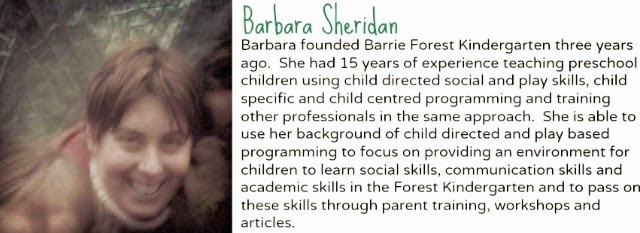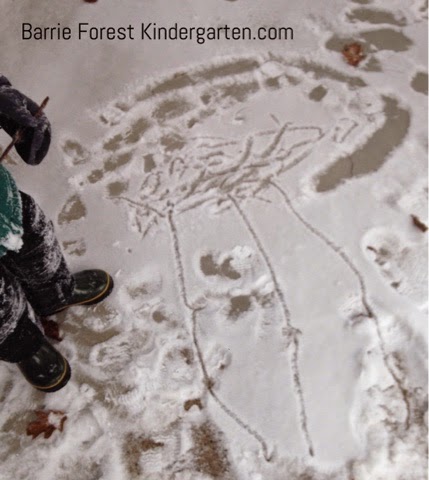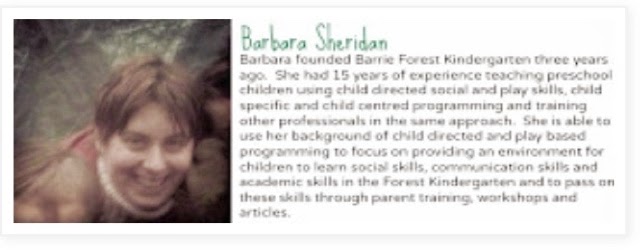Being in the outdoor learning field one question I get a lot is how do I get my child to play outside. Many parents report their child gets bored, or might ask to go home rather than settling in and getting immersed in their play.
The first issue to tackle is looking at how your kids play in all environments. If your child is not playing in general it is a stretch to take them to a forested area and tell them to play.
But what about parents / caregivers who have children that get immersed in play at home, at school, with friends but seem to freeze when they go outside in the woods? There are a lot of elements to forest pretend play that are different than at home pretend play. Here are five stumbling blocks for kids (and parents) and solutions to help them over the indoor/outdoor obstacle.
1. One difference is loose parts. If kids are used to playing with toys with predetermined usage (swords, dragons, castles) versus loose parts - sticks, rocks, leaves that either have to be constructed in reality or in the minds eye it is sometimes difficult for kids to make that leap. Kids that have this problem you can bring more familiar toys with you (bring dragon) and forget a part (oh, I forgot the swords what can we use!). This forces kids to slowly start thinking out of the box and as they get better and better at using loose parts you can move to using just loose parts or natural forest material.
2. There is also a sensory element as well. Kids have had their toys at home and as babies and on up they explore by picking up, dropping, mouthing pushing but if they haven't done the same sensory exploration outside they may need to start there to get a comfort with natural loose parts. Even the most experienced and complex pretend players in my forest kindergarten will go back to sensory play during season change as new "loose parts" (snow, ice, mud, puddles etc) are discovered or rediscovered or if we go to a new place. But as they become comfortable with the items they start using them for more complex play. To help kids delve deep into sensory exploration forget pretend, forget stories focus on the feel of the outdoors. Let the creek water splash on your hands, bury yourselves in leaves and jump in piles, have a snow fight either with eachother or against trees or rock walls. As the children become involved in the sensation it will eventually evolve into more pretend play and you can support their journey.
3. Often times at the house they have "yes" environments - either because it is set up that way or because they know the rules (like not jumping on the couch) and it becomes a yes environment. They can get down and dirty and play without worrying about what they are doing. If there is a big no environment at the forest - no picking, no exploring, no lagging behind (keep up!!) they are more worried about doing something wrong, or are interrupted in their play, so can't get into deep immersion in the play. Instead take them somewhere they can explore how they want without worry about doing something wrong. As they become stronger at play you can bring them to more familiar places that may have more no's but they can juggle and adapt their play because they are experienced outdoor players.
4. Friends - outside play for kids naturally involve others (my remembered memories are always with other kids). Kids learn from, imitate and build play with other kids in ways they can't with adults. Start with kids who are experienced outdoor players and soon your outdoor excursions will involve the play they are learning from their friends even if they are not there.
5. Adults should get messy too - Parents are often times worried about the product, the result and not necessarily the process (they focus on taking a hike, to find a certain flower, or learn a certain skill). However kids get immersed in process often times don't care about product but learn as they go along. Whether it be a sense of limited time for an outing, a general anxiety of being out of your element, or kids out of theirs, or a need to produce the perfect Facebook picture parents sometimes feel the pressure to "do something" outside. If parents are overly focussed on a particular goal they often interrupt a child when they are getting off track of the adult goal but it is the full immersion in their process, the getting off track, not their parent or caregivers product, which builds good outdoor pretend players. If you are a product oriented adult try bring a project for yourself to stay occupied and free the kids up for some good old fashioned uninterrupted play.












































